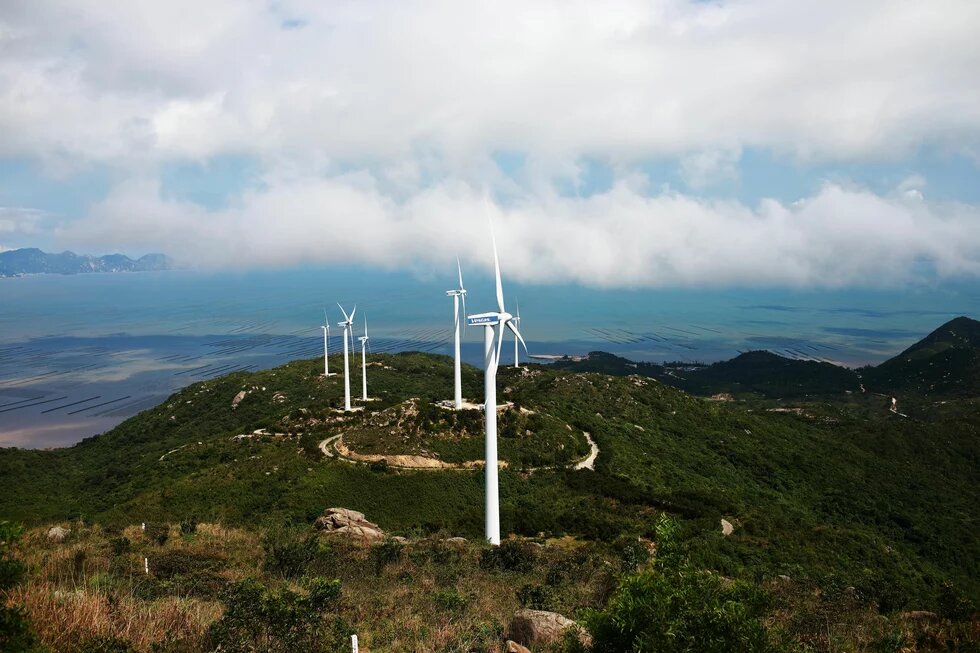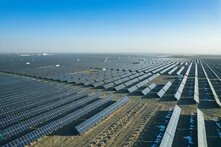As the US retreats from the global climate agenda and the EU struggles to fill the leadership gap, many are looking to China, the world’s largest emitter and leader in clean energy. What can we expect from China's new Nationally Determined Contribution (NDC) for 2035?

At the UN General Assembly in September 2025, China’s top leader Xi Jinping outlined the direction of travel for China over the coming decade by announcing China’s Nationally Determined Contributions (NDC) for 2035. China's emission pathway has unparalleled global significance, as the country alone contributed around 90 percent of the emissions growth over the last decade, but also leads in renewables expansion.
This is the first time that China has set absolute emission reduction targets, covering all greenhouse gases and all sectors: seven to ten percent from peak levels by 2035. While doing so, China became one of the first emerging countries to set medium-term absolute emission targets.
The fact that President Xi Jinping announced China's new climate targets personally is a positive gesture, signalling high-level commitment to the global fight against climate change. The additional sectoral targets explicitly named solar, wind and EVs as key solutions to meet the emission commitment. The targets make it clear that these clean energy technologies are at the heart of China's energy strategy.
This announcement by Xi is obviously a much-needed counterweight to the Trump administration extolling the virtues of polluting fossil fuels, particularly those imported from the US.
Domestic Contradictions
At the same time, the targets reflect China’s domestic contradictions. The headline emission target is to reduce economy-wide net greenhouse gas emissions by just seven to ten percent from peak levels by 2035, while noting that China will strive to do more. This target falls far short of what would be required to align with the Paris Agreement — an emission reduction of at least 30 percent from 2024 levels by 2035. Most importantly, it falls well short of what the country can achieve based on current clean energy trends, policies and targets.
The target for solar and wind capacity is 3,600 gigawatt (GW) by 2035. The absolute scale of the targeted clean energy expansion is massive — compare the target with the EU’s target for more than 1100 GW by 2030, itself a strong and ambitious number. Yet, China’s clean energy sector is already on track to meet the target well before 2035 if current trends continue.
The current targets should be seen as a floor, not a ceiling, for China’s ambition.
In fact, reaching “only” 3,600 GW by 2035 would mean a sharp slowdown of recent trends. Meeting the target requires adding less than 200 GW of solar and wind per year, compared to the 360 GW added in 2024 and more expected this year. Therefore, the target is likely to be exceeded dramatically, as was the previous 2030 target, which was achieved 6 years early.
Thus, the current targets should be seen as a floor, not a ceiling, for China’s ambition. The gap between what China has pledged and what it is capable of achieving is large — and will shape the global climate outlook over the coming decade.
Emissions Peak Remains Ambiguous
Setting the target from “peak levels” rather than based on a specific base year reflects disagreement about whether emissions have peaked already. China’s fossil CO2 emissions have been falling since early 2024, as growth in clean power generation has outpaced energy demand.
The solar, wind and other non-fossil power generation capacity added in 2024 alone will generate 580 terawatt hours (TWh) per year of electricity, more than enough to power Germany, or the UK twice over. Most importantly, it is enough to cover electricity demand growth up to 5.9 percent, exceeding the average of five percent per year. 2025 is expected to top last year’s record clean energy additions by a wide margin. It’s therefore clear that China has the ability to peak and decline emissions immediately.
Even a few years of additional increases at current levels would lock in substantially higher cumulative emissions.
Yet, policymakers decided to leave the door open to a period of emission increases before China’s previous commitment to peak emissions before 2030, at the latest, kicks in. This undefined peak level risks creating a counter-productive incentive for firms and local governments to increase emission levels in the short term. This could have significant implications, as even a few years of additional increases at current levels would lock in substantially higher cumulative emissions, thereby exacerbating the severity of adverse climate impacts.
The Long Shadow of Coal
This ambiguity is rooted in China’s coal policy. In response to the fuel and power shortages of 2020–22, China massively expanded domestic coal mining and coal power capacity. Despite President Xi’s pledge in 2021 to “strictly control” new coal power projects and coal consumption growth during the current 14th Five-Year Plan, coal power project approvals and coal consumption growth accelerated sharply.
The fundamental dilemma is clear: China cannot sustain the simultaneous rapid growth of both its clean energy sector and its coal industry. At some point, one must give way. The current targets suggest that Beijing has not yet resolved this contradiction, reluctant to face the economic consequences of slowing down clean energy, or the strong vested interests backing coal.
Reinforcing Existing Targets
Yet, China’s existing targets, if upheld, already imply a reduction in total emissions and coal consumption before 2030.
For China to still achieve its carbon intensity target for 2030, absolute emission reductions will be required over the next five years.
China’s carbon intensity target is the most relevant in this case. China has committed to reducing carbon intensity by over 65 percent by 2030 compared to 2005. However, due to the emissions-intensive post-Covid recovery period, China is currently far off track for its interim carbon intensity target for 2025. This means that to still achieve its carbon intensity target for 2030, absolute emission reductions will be required over the next five years. This makes the 2030 targets effectively stronger than the absolute emissions target for 2035.
Upholding China’s pledge to phase down coal consumption during the 15th Five-Year Plan provides another crucial limitation for emissions growth. While this pledge, originally announced by President Xi in 2021, was not restated in the announcement of the NDC, it was reiterated in the interpretation of the NDC by the Chinese Ministry of Environment. It will be crucial to see how the government incorporates this commitment into the upcoming five-year plan.
When President Xi announced the 2030 carbon-intensity target in 2020, he emphasized:
“China always honours its commitments.”
The implementation of the NDC and China’s upcoming Five-Year Plan target will be the test of those words.
Global Implications
Despite the shortcomings, China’s new climate pledge marks a step forward. By adopting absolute emission reduction targets across all sectors and gases, China is signalling to the world that it intends to play a more defined role in shaping the global transition.
In particular, there is no doubt about China’s determination to develop the fundamental technologies of the age of clean electricity — solar, wind, electric vehicles and decarbonized industrial processes based on clean electricity — and to export them to the world. Peaking the country’s own emissions will likely put China in a position to be a lot more proactive in promoting the clean energy transition globally as well.
However, the modesty of the targets — relative to both the country’s potential and the Paris goals — reveals a strategic caution rooted in domestic political and economic constraints.
The real impact on the world will depend less on the formal target numbers and more on China’s actual energy transition on the ground.
The real impact on the world will depend less on the formal target numbers and more on China’s actual energy transition on the ground. If current clean energy trends continue, China could drive down global emissions faster than its pledge implies, reshaping energy markets, lowering clean technology costs, and exerting competitive pressure on other major emitters.
China’s climate pledges are not just numerical targets but also political statements charting the way for China’s future economic development. President Xi said,
“Instead of talking the talk, we must walk the walk. We must turn our goals into tangible results through systematic policies and concrete measures.”
Therefore, China’s NDC does not provide a final declaration but a starting point and guiding direction for China’s development. The upcoming 15th Five-Year Plan and the years ahead of 2030 will provide further opportunities for policymakers to refine and revisit the targets set based on real-world developments.

